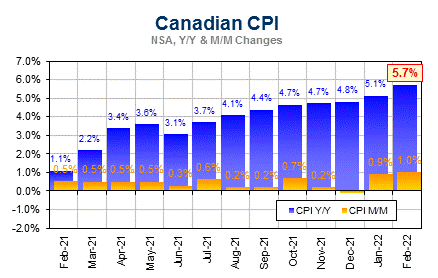A gradual pace of normalization is supported by the December announcement, which revealed a less optimistic view on growth amid likely material weakness in energy and an increasing weight from trade conflicts on global demand.
In October, the Bank dropped “gradual” from the final paragraph as they did not want to give markets the idea that rate moves could only happen at every other announcement. Meanwhile, December’s s announcement did not bring back “gradual”, but the less upbeat outlook for growth alongside well contained core inflation will keep BoC on hold tomorrow.
Inflation has been evolving as expected and the Bank’s core measures are all tracking 2 per cent, consistent with an economy that has been operating close to its capacity.
Total CPI revealed the as expected 0.4% m/m drop in November to a slightly weaker than anticipated 1.7% y/y pace. The more prominent development was that all three core CPI measures came in at a 1.9% y/y growth, adding to the backing for no change in rates from BoC in January and March.

The tumble in crude oil prices remains a headwind to Canada’s 2019 growth prospects. Granted, BoC was clear that they view the current swoon in oil prices as less severe in terms of the growth implications relative to the 2014/15 oil price plunge that prompted two 25 bp rate cuts.
Policy normalization remains the base-case scenario, but recent data and events suggests they may need to wait until April of 2019 at the earliest to further lift rates.
“Governing Council continues to judge that the policy interest rate will need to rise into a neutral range to achieve the inflation target.”. “the appropriate pace of rate increases will depend on a number of factors.”
With oil prices “materially weaker than expected,” and trade exerting a larger drag on global demand, futures now have around a 40% chance for a January hike versus 55% ahead of the announcement.
As for the remainder of next year, two rate hikes for 2019 have been penciled (was three 25 bp hikes) as the economy grapples with likely materially weaker energy sector activity. This would be below the 2.50% to 3.50% neutral range identified by BoC.
Click here to access the HotForex Economic calendar
Andria Pichidi
Market Analyst
HotForex
Disclaimer: This material is provided as a general marketing communication for information purposes only and does not constitute an independent investment research. Nothing in this communication contains, or should be considered as containing, an investment advice or an investment recommendation or a solicitation for the purpose of buying or selling of any financial instrument. All information provided is gathered from reputable sources and any information containing an indication of past performance is not a guarantee or reliable indicator of future performance. Users acknowledge that any investment in FX and CFDs products is characterized by a certain degree of uncertainty and that any investment of this nature involves a high level of risk for which the users are solely responsible and liable. We assume no liability for any loss arising from any investment made based on the information provided in this communication. This communication must not be reproduced or further distributed without our prior written permission.



















